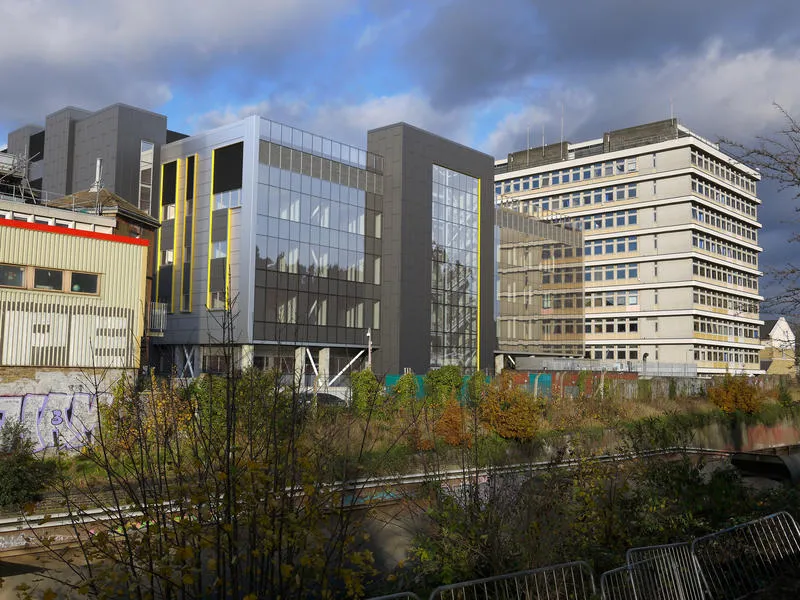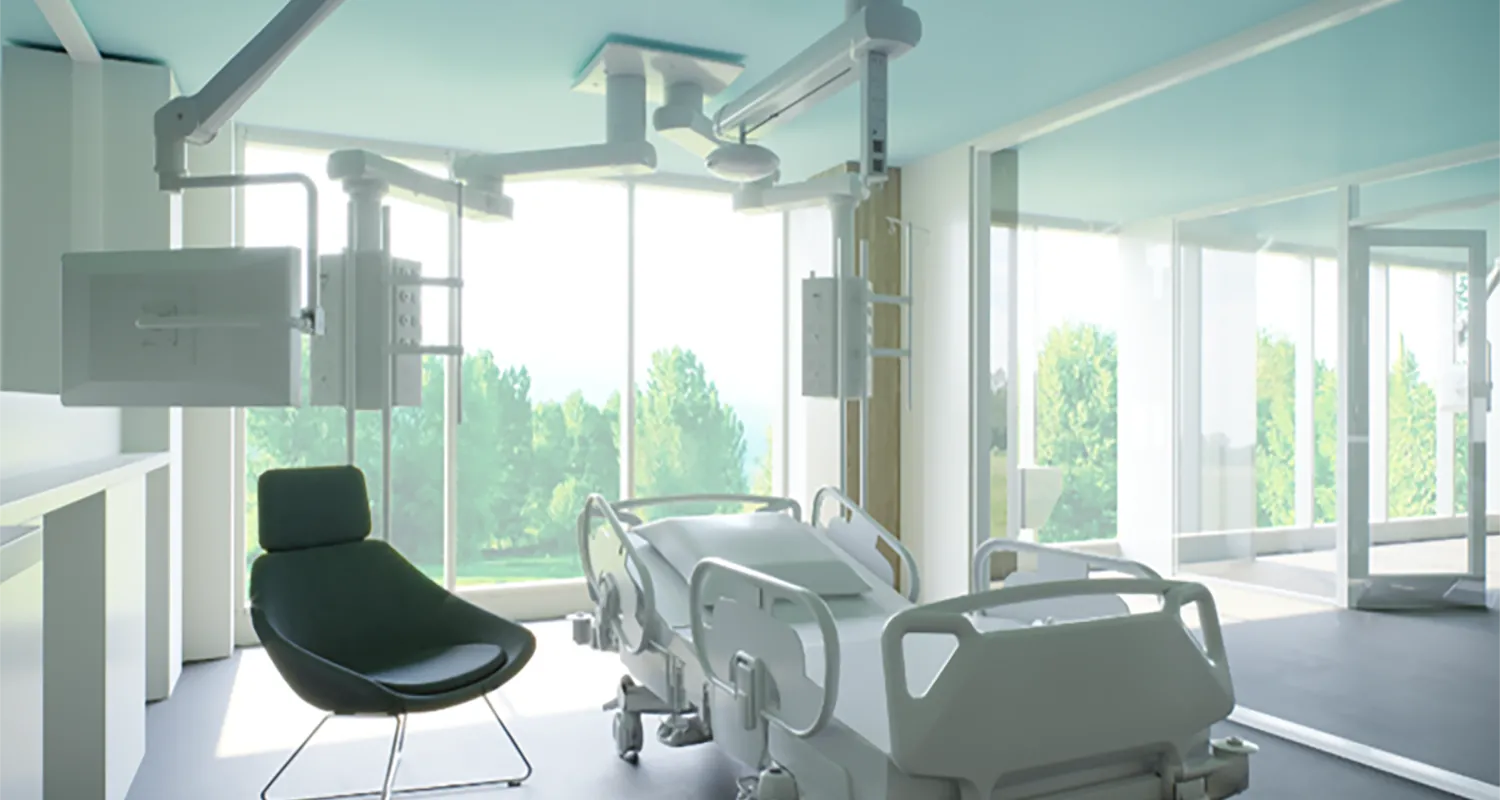Linked to the helipad, operating theatres and the Emergency Department, the Critical Care Centre is at the heart of a critical care service that supports more than 5,000 patients and 15,000 relatives each year.
Waking up in critical care can be frightening. Hearing is often the first of the five senses to return, so patients may hear alarms and beeps but they may not know what these noises are. They might not be able to see or move, and they are likely to be on strong medication, which can cause hallucinations.

In the new Centre, every room is designed to feel less clinical and intimidating, and instead be more comforting and comfortable for patients. Table lamps offer warm light in the evenings, there is artwork on the walls, and patients are able to control their own environment – noise and light, levels of privacy – as well as have access to their favourite music, films, TV and radio.
- All the rooms have beds next to floor-to-ceiling windows that overlook the trees in nearby Ruskin Park and flood the rooms with natural light. The windows can be also opened so patients can feel the breeze and enjoy the fresh air.
- Patients can rotate their bed 360°, allowing them to look around and choose what they see. Each bed is surrounded by smart glass panels that patients can turn clear, cloudy or opaque, allowing them to have privacy or see what’s happening outside their room.
- Artwork, particularly of trees and nature, is prevalent throughout the Centre, creating an environment that helps promote recovery and reduce the damaging effects of long-term stays in critical care, such as anxiety, depression and post-traumatic stress.
- Patients can easily stay in touch with their loved ones through access to everyday technology. Individual bedside touchscreen computers not only efficiently capture medical data, they also provide a portal so patients can stay in touch with family and friends. Simple things like saying ‘good morning’ or ‘good night’ to a loved one can make all the difference to a patient in intensive care. They can also use the tablet to access our new patient entertainment system to help alleviate some of the boredom during a long hospital stay.

